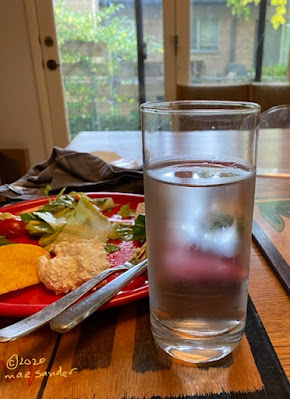In September, I have new gadgets, new food products, but no new optimism in my kitchen. Although consumption in our household has gone down during the pandemic, we did buy a few new items. Here are the ones for use in my kitchen and dining room:
 |
For baking: a larger peel. Purchased from
King Arthur Baking Company. |
 |
Small appliances: A new can opener to replace the hand-powered
one that was getting tricky to use. And a new spice grinder.
Observation: very few cans need a can-opener, most have a pull tab. |
 |
A loaf of bread flavored with pepper ground in the new
spice grinder. Recipe from the Poilâne bread book.
One of many breads Len baked in September. |
Kitchen reflections on the continuing crisis.
Almost all of the items in above list were purchased from amazon.com or from Whole Foods and ordered via amazon.com. They were delivered by trucks working for amazon.com. Amazon.com deserves credit for living up to my reliance on them with timely delivery, if not the lowest prices. However, there's a broader social and civic concern when one company is so powerful, and when there are questions about the welfare of workers who are employed there.
Only one purchase of mine was completely independent of amazon.com — the King Arthur order, which was delivered by FedEx. None of my purchases relied on the Post Office. However, in my kitchen today, I'm thinking of the current administration’s effort to destroy the effectiveness of the Post Office and undermine its 49 years of success in its current form; not to mention its original founding in 1775 led by Postmaster General Benjamin Franklin.
The current President hates amazon.com. He would like to destroy it without any effort to mitigate the damage it would do to vast numbers of people who have come to depend on its reliable supply of many types of goods, which are delivered by the Post Office for most customers. The President certainly has no regard for those who rely on employment there, no matter how precarious.
Determined to destroy this one company, the President and his corrupt Postmaster General have begun to destroy the timely and reliable services of the PO and thus destabilize our society. This is horrifying. In addition to undermining amazon.com, a major acknowledged motive of this sheer destruction of a valued institution is to undermine voting and illicitly re-elect the current disastrous administration. This is threatening not just to me (what do I matter) but to large numbers of citizens who rely much more than I do on goods shipped through the mail: food, tools, medications, and all the stuff of life. And ballots! My neighbors' signs show this sentiment.
While I remain among the lucky citizens who remain free of disease, who are able to sustain pre-shut-down prosperity, and who even have ways around the Post Office, I continue to think with great sympathy of those whose lives are catastrophically affected by the many disasters we are experiencing. Americans all share a vast number of challenges to ourselves and our democracy: being locked down to avoid disease (or suffering from Covid), suffering from fires and floods due to climate change, experiencing or sympathizing with increased poverty and hunger in our country; being threatened by civil unrest, racial strife, and widening of inequality; undermining of the election, disruption of education at all levels, and mourning the death of one of our great leaders and protectors, Ruth Bader Ginsberg. And she's being replaced with a lackey before she's even in her grave.
I'm sharing my kitchen thoughts and new items for this month with Sherry's blog event "In My Kitchen" -- as I do each month. I've also posted a separate set of images of foods we ate this month here:
Blog post and all photos © 2020 mae sander for mae food dot blog spot dot com.





















































